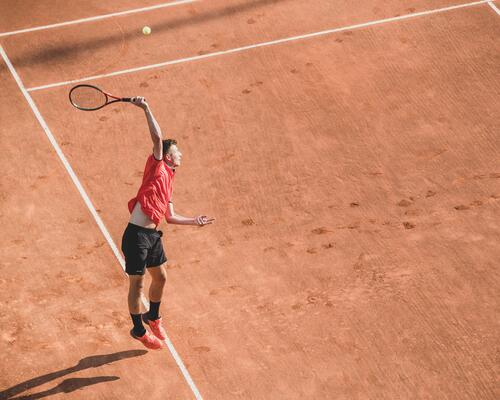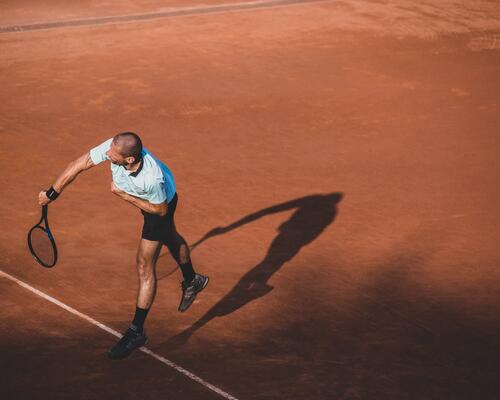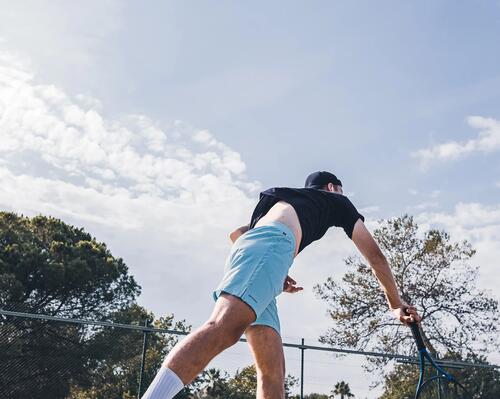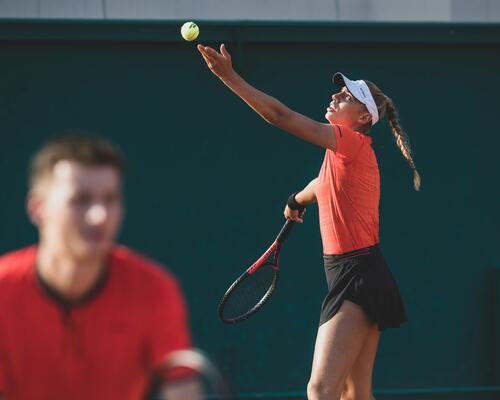A closer look at the serve and volley
The serve and volley in tennis is a fearful weapon when used correctly. The server moves quickly to the net after the serve, no matter if it was their first or second serve.
But how do you quickly shift to a volley without losing the point?
Timing is at the heart of this transition and is the secret to a successful serve and volley. A powerful flat first serve isn't an ideal option for going into a volley. The receiver can very easily lean forward to return, taking away the time you need to transition. Your next shot will be returned very quickly and you'll be in a bad position to volley because you'll be near the service line, in the best case scenario.
So give yourself time to move!
A good topspin second serve kicked high or sliced into the returner is perfect for giving yourself time to come towards the net and block all of the receiver’s angles. But keep in mind that you aren't stuck to the net during a serve and volley.
Of course, you must be very explosive so that you can get to the net as quickly as possible, but you have to be very aware of your opponent's return.
Don't forget to stay on your toes so that you can move as soon as the receiver hits!






